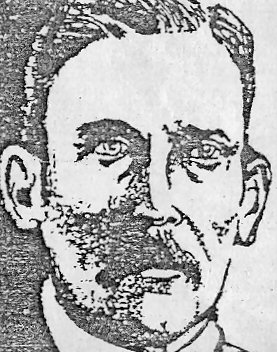Three James’s were central to Ireland’s labour movement a century ago. Perhaps the most famous is James Connolly who led the Citizens’ Army contingent at the 1916 Rising and who was subsequently executed for his part [strapped to a chair since his injuries precluded his standing].
Big Jim Larkin, chief founder of the Irish Transport and General Workers Union – and later the Workers Union of Ireland – was perhaps the most formidable Irish labour organiser ever, remembered especially for his leadership during the 1913 Dublin lockout. Larkin claimed that his father came from Killeavy and his mother from Burren.
The third James was Larkin’s right-hand man and after him the Union Hall on Merchant’s Quay, Fearon Hall, is named. This is his story.
James Fearon was born on Castle Street in July 1874. He was one of seven children orphaned when his father was suffocated, under suspicious circumstances, at the local grain mill where he worked. Young James served for a time with the British Army but soon became a socialist agitator in his adopted city of Glasgow [as did the other two James’s]. According to Robbie McGrath [father of Tommy, elsewhere herein extolled] Fearon was influenced by the ideas and activities of Thomas Mann and Ben Tillet. He soon struck up a close alliance with Jim Larkin and together they organised workers in Glasgow, Ardrossen, Bowness, Leith, Belfast, Newry, Warrenpoint, Drogheda, Cork, Dublin and Waterford.
The Newry branch of the National Union of Dock Labourers was established at a meeting in Newry town hall on 27 September 1907, when Fearon was appointed secretary. Other activists of the time included Patrick McKevitt (High Street), James McShane (Drumalane), B McEvoy, Patrick Burns and A Meehan. Fearon, known locally as Round-The-Ring [where he’d fight the employers!] was a docker and life-long socialist. Militancy and aggression were his methods. A Newry dock strike was called almost at once. When he learned that blacklegs were unloading coal at Warrenpoint to break the strike, Fearon marched his men all the way there to dissuade them. He succeeded in persuading a craneman and five other workers to join the strike. In an attempt at escalation he scaled the gasworks walls to talk to the gas workers about coming out in sympathy. This brought reactionary forces out in full against him. The Irish News and the Catholic clergy openly sympathised with the employers. Fishers threatened to bring in the military to break the strike and promised the intervention of the scab-infested, strike-breaking Shipping Federation. Also as a sop, the gas workers were offered a small wage increase. With the bishops’ support the strike was broken. Later Newry dockers – recounting the story – claimed that union badges had to be surrendered and were then nailed, by Fishers especially, to their business counters. A few minor concessions had been won: the evil practice of paying dockers in pubs – where they could be expected to return much of their earnings to the proprietor, often an employer’s man – ended; and some modest increase was paid and the right to review terms.
From his hospital bed in Newry Workhouse Fearon continued to agitate and organise protests. He lobbied his supporters [unsuccessfully!] to scale the Cathedral roof to highlight the clergy’s indifference to the plight of Newry’s poor. He ended the scandalous practice of listing in public notices the names of inmates of the workhouse, and he successfully had heather Park built on the site of an old brickworks. Direct action by Fearon, McGrath and others prevented an old woman of Peter’s Place from being evicted – despite the presence of the RIC, bailiffs and the landlord.
In 1908 Fearon was chiefly instrumental in organising the Cork Dock Strike. In December of that year Larkin and Fearon broke with the British bosses (especially James Sexton) of the National Dock Labourers and set up the Irish transport and General Workers Union. Fearon created a workers’ militia centred on Cork which James Larkin claimed provided the inspiration for the Irish Citizens’ Army. For the rest of his life Fearon struggled in Ireland and Glasgow for workers’ rights. He never married because, as he told friends and family, he would not ask a woman to share the life his work obliged him to lead.
On 24 October 1924 James Fearon died in Glasgow. His funeral was one of the largest ever seen in that great city.
